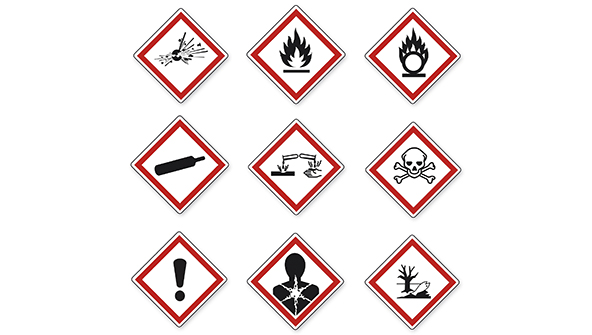OSHA has announced that it will seek input from the public on how to implement its “Weight of Evidence” approach to chemical classification, currently outlined in its draft document Guidance on Data Evaluation for Weight of Evidence Determination: Application to the 2012 Hazard Communication Standard.
This approach to chemical classification is intended to help chemical manufacturers, chemical importers, and employers to evaluate scientific studies that may inform their determination of hazards — and the degree of those hazards — posed by chemical substances. Determinations based on these studies can directly impact what needs to go on a container label and/or safety data sheet (SDS) to keep employees safe and keep companies compliant with HazCom 2012.
OSHA says this input on the new draft document is intended to complement its recently-released guide Hazard Classification Guidance for Manufacturers, Importers, and Employers.
“It is vitally important that workers and employers be given complete and accurate information about the hazards associated with exposure to the chemicals with which they work. Without that, how can they ensure they are protected?” said OSHA head Dr. David Michaels in a press release. “This guidance will help educate chemical manufacturers and importers about OSHA's expectations on how to prepare accurate safety data sheets and labels required to protect worker safety and health.”
While the new draft document contains guidance, it is not a new OSHA standard and it creates no new legal obligations. Rather, it is intended to provide clarity and assistance in meeting already-existing regulations and requirements.
Under HazCom 2012, all chemical manufacturers and importers are required to determine the health and physical hazards posed by their chemicals. They are directed to do this by considering “the full range of available scientific literature and other evidence concerning the potential hazards.” But what counts as “scientific literature?” How big is “the full range?” What is “other evidence?” These are some of the areas where OSHA appears to hope that public comment will make criteria clearer.
The language in the current draft document also seems to make clear that OSHA intends that those classifying should be overcautious (as opposed to under-cautious) whenever they are faced with making a choice related to the classification of a chemical. As OSHA outlines it in the draft document:
“The HCS is intended to be conservative in nature to ensure that employers are informed about the potential hazards of the products they use and that workers are alerted to and protected against these potential hazards. In other words, where there is uncertainty, OSHA expects that documents produced to meet the requirements of the HCS will err on the side of providing warnings and categorization into more hazardous categories.”
“This new draft document is most useful in circumstances in which an authoring professional is evaluating test results that present conflicting data,” explains Ivy Mattio, Director of Authoring Services at VelocityEHS. “It certainly provides a wealth of helpful guidance; however, it’s critical that authors of safety data sheets be conservative and continue to perform a full weight of evidence assessment when classifying against published studies, rather than relying 100% on this new draft document. This is intended to enhance comprehensive training on classifying for GHS and HazCom 2012, not replace it.”
For more information, or to review the draft guidelines and provide input of your own, you can visit OSHA’s Weight of Evidence webpage here. The deadline for submitting your comments is March 31, 2016.







